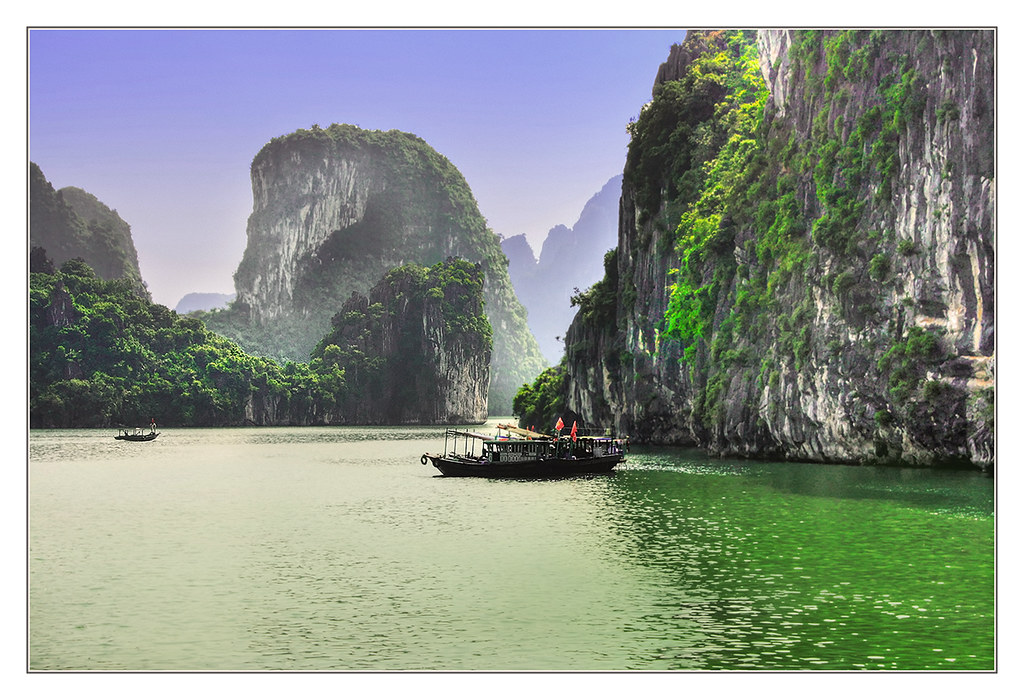Hạ Long Bay has an area of around 1,553 km2 (600 sq mi), including 1,960–2,000 islets, most of which are limestone. The core of the bay has an area of 334 km2 (129 sq mi) with a high density of 775 islets. ![]()
 The islands and islets are uninhabited and unaffected by humans, forming a spectacular seascape of limestone pillars and is an ideal model of a mature Karst landscape developed during a warm and wet tropical climate. In addition to the beautiful and characteristic islands and islets of the bay such as Trong – Mai Islets, Con Coc Islets, Dinh Huong Islets, Ngoc Vung Islets, etc., the complex of Ha Long Bay also has many famous caves such as Sung Sot Cave, Thien Cung Cave, Bo Nau Cave, etc
The islands and islets are uninhabited and unaffected by humans, forming a spectacular seascape of limestone pillars and is an ideal model of a mature Karst landscape developed during a warm and wet tropical climate. In addition to the beautiful and characteristic islands and islets of the bay such as Trong – Mai Islets, Con Coc Islets, Dinh Huong Islets, Ngoc Vung Islets, etc., the complex of Ha Long Bay also has many famous caves such as Sung Sot Cave, Thien Cung Cave, Bo Nau Cave, etc
Ha Long Bay was established as a historical and cultural relict and classified as a National Landscape Site in 1962. It was recognized as a UNESCO World Heritage Site in 1994.
 With exceptional values in terms of landscape and geology, geomorphology, Ha Long Bay converges favorable conditions to develop a tourism economy with diverse types. Visitors coming to Ha Long Bay can participate in scientific research activities, sightseeing tours, swimming, boating, parachuting, diving to explore coral reefs, and recreational fishing. Types of cruise tourism in Ha Long Bay include visiting the bay during the day, taking an afternoon tour to watch the sunset on the bay, a night cruise to see the bay at night combined with squid fishing, you can even paddle your boat to explore the bay.
With exceptional values in terms of landscape and geology, geomorphology, Ha Long Bay converges favorable conditions to develop a tourism economy with diverse types. Visitors coming to Ha Long Bay can participate in scientific research activities, sightseeing tours, swimming, boating, parachuting, diving to explore coral reefs, and recreational fishing. Types of cruise tourism in Ha Long Bay include visiting the bay during the day, taking an afternoon tour to watch the sunset on the bay, a night cruise to see the bay at night combined with squid fishing, you can even paddle your boat to explore the bay.
Ha Long Bay is also the place to receive the award “Asia’s Leading Tourist Attraction in 2021” of the World Travel Awards – a prestigious award in the tourism field.
According to Wikipedia and whc.unesco.org













